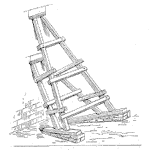
Introduction in ALT:
Accelerated life testing (ALT) is a method used to enhance product reliability by subjecting prototypes to stress levels significantly higher than those encountered in actual use.
By increasing the stress on the component, failure is induced more rapidly, which is equivalent to speeding up the passage of time. This approach is particularly useful when waiting for failures to occur at their normal rate is not feasible, such as when a manufacturer needs to release a product to the market soon and cannot afford to spend several years performing a reliability test.
[Read more…]












 Ask a question or send along a comment.
Please login to view and use the contact form.
Ask a question or send along a comment.
Please login to view and use the contact form.